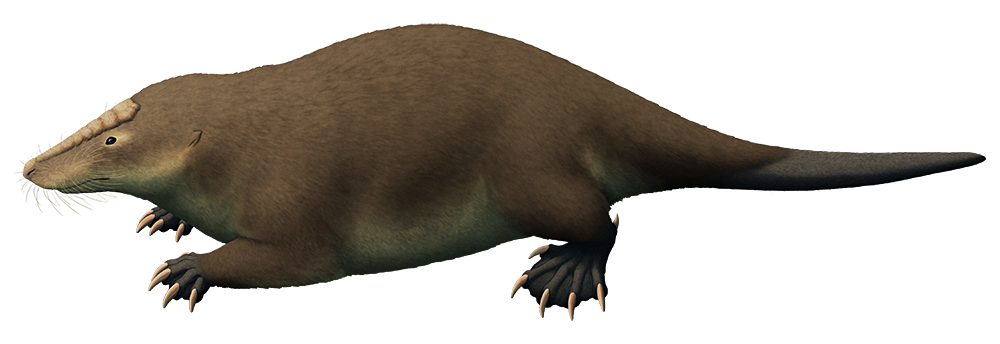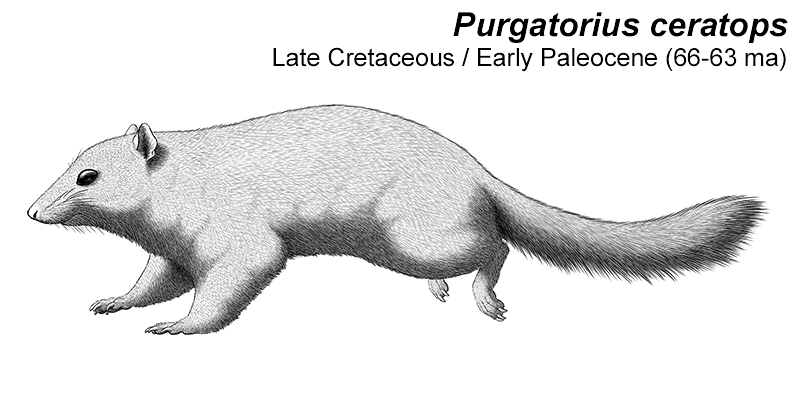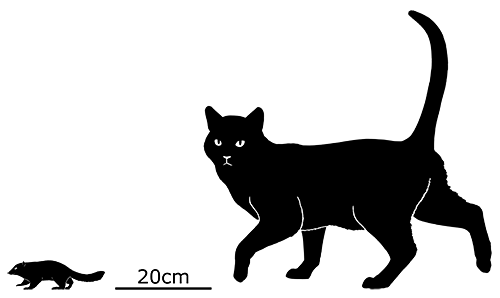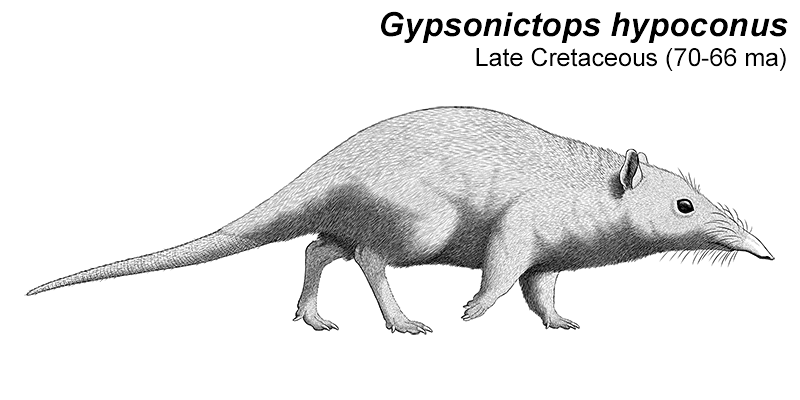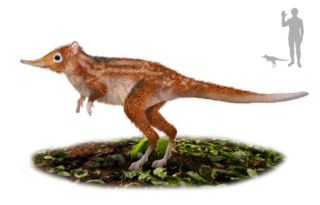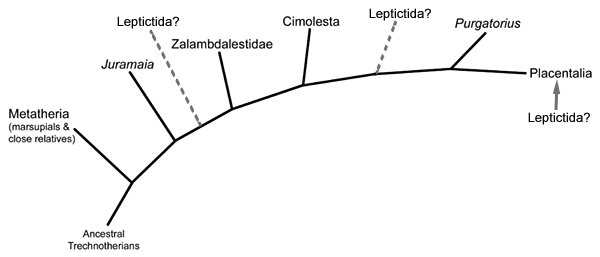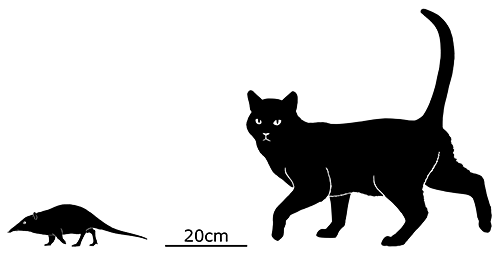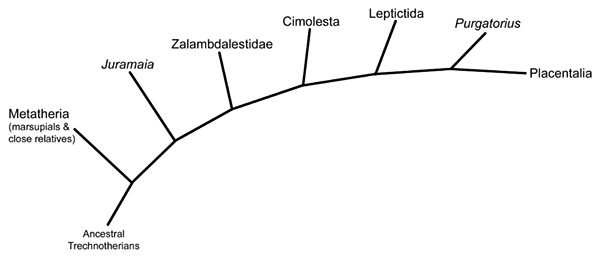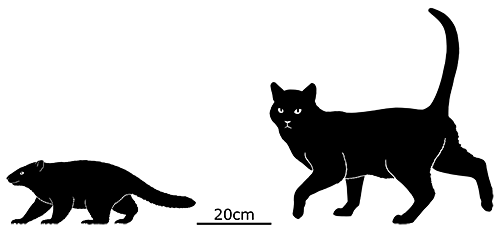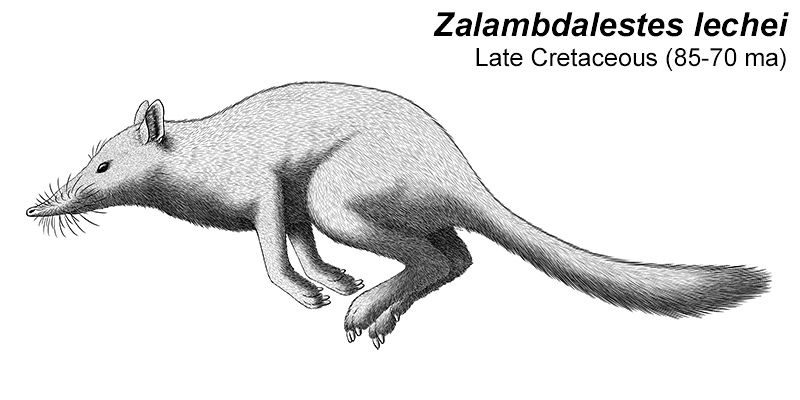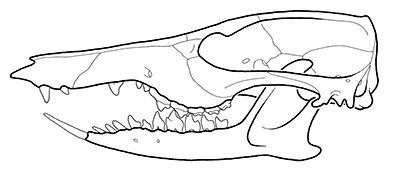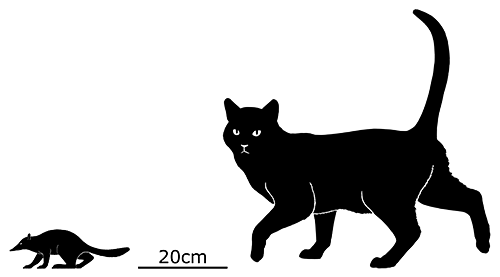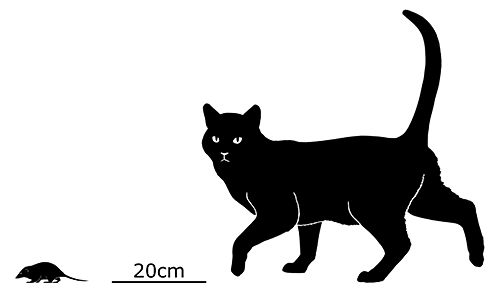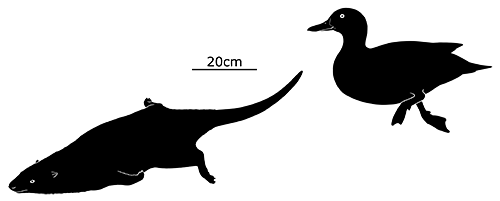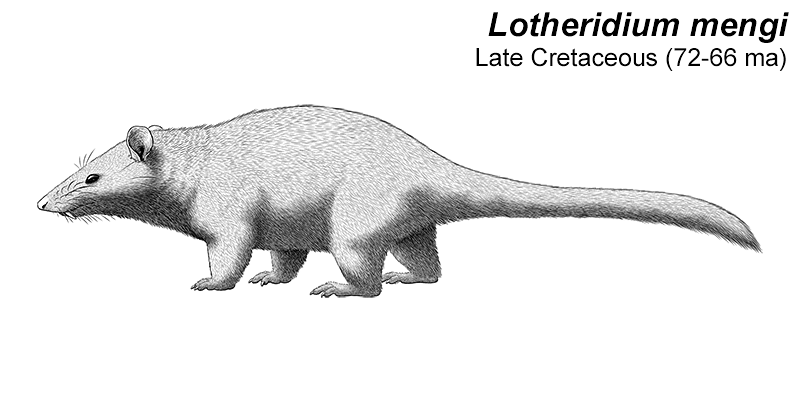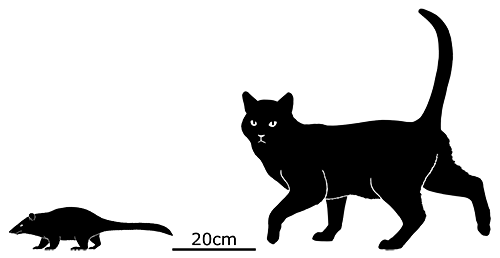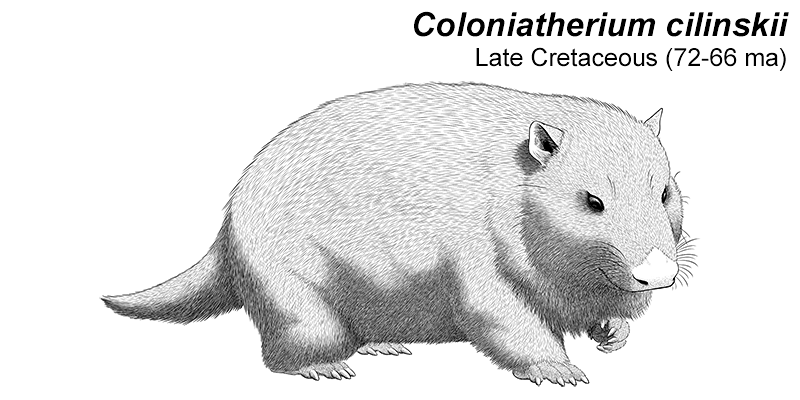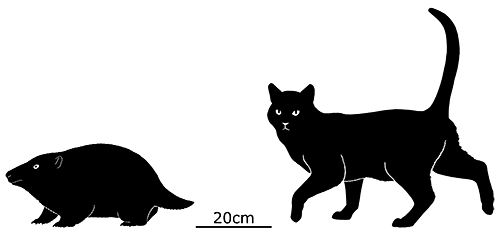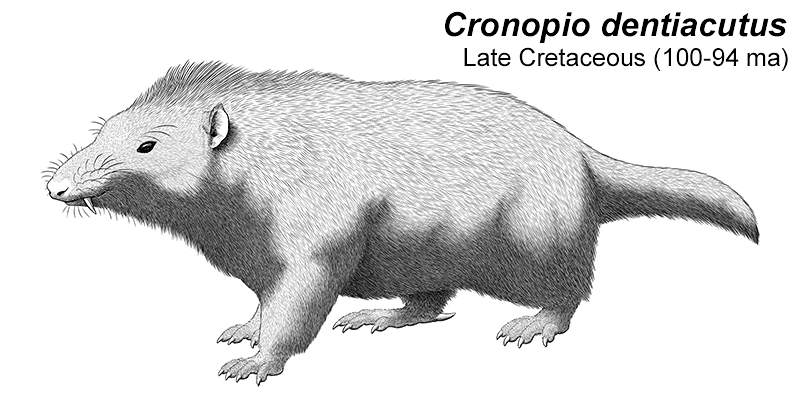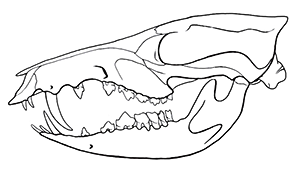The docodonts were a group of mammaliaformes (close relatives of the earliest true mammals) which lived across North America, Europe, and Asia from the Middle Jurassic to the Early Cretaceous. Originally only known from teeth and jaw fragments they were traditionally thought to be fairly generic shrew-like insectivores, but more recent discoveries of better fossils have revealed they were actually much more diverse, occupying ecological niches ranging from squirrel-like tree-climbers to mole-like diggers to beaver-otter-like swimmers.
Most of the more complete fossil material of these animals comes from the mid-Jurassic of China, but one species from elsewhere is also known from a partial skeleton.
Haldanodon exspectatus here lived in central Portugal during the Late Jurassic, about 155 million years ago. Around 15-20cm long (6-8″), it had small eyes and short chunky well-muscled limbs with the front paws adapted for digging. Since it inhabited a very swampy environment it probably wasn’t a pure mole-like burrower – extensive tunnels would have constantly flooded – but it may have instead been a similar sort of semi-aquatic animal to modern platypuses and desmans, foraging for invertebrates in the water and excavating burrows in the banks.
Roughened areas of bone on its snout may also have supported a patch of tough keratinous skin, which would have helped protect its face while digging.

